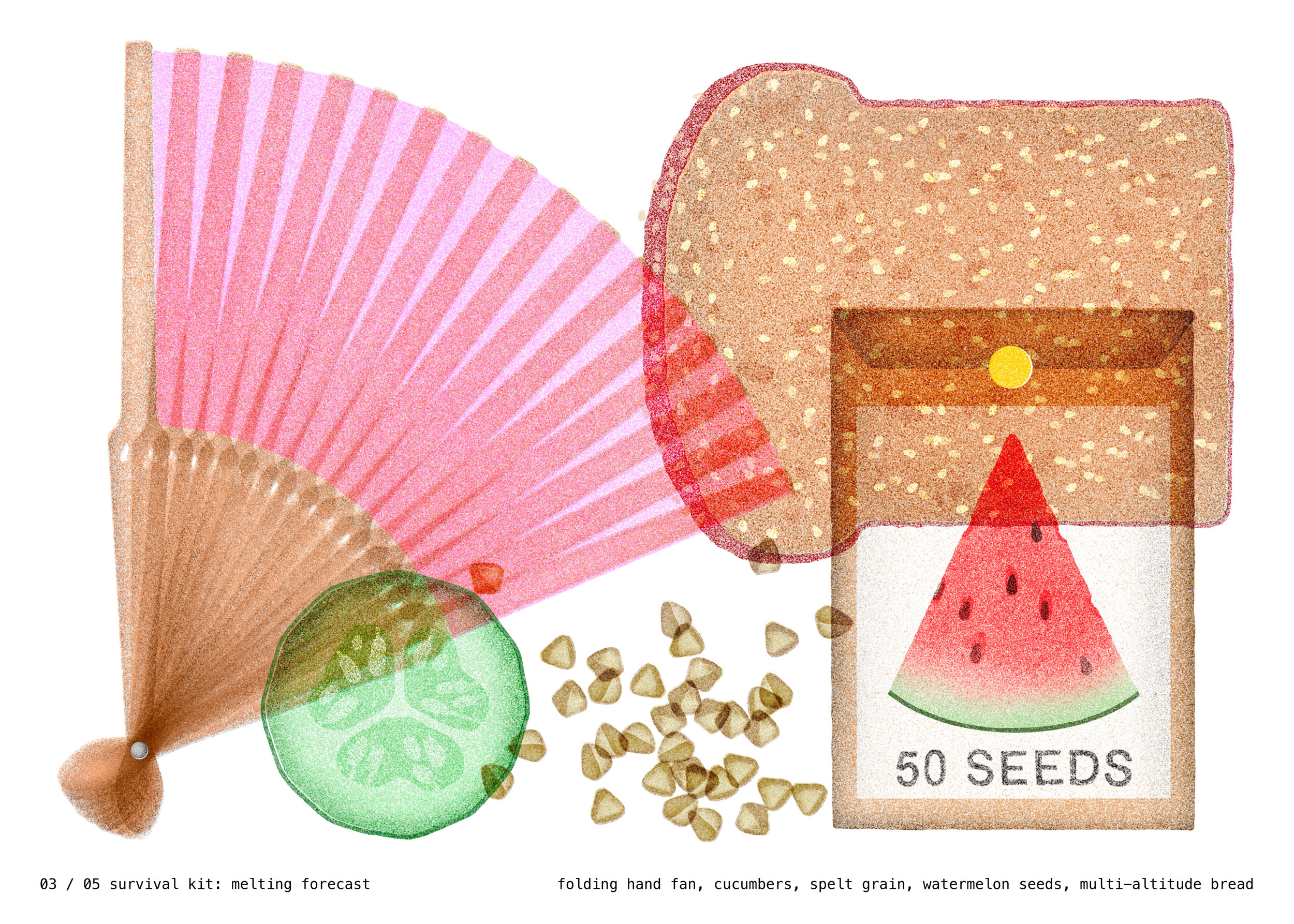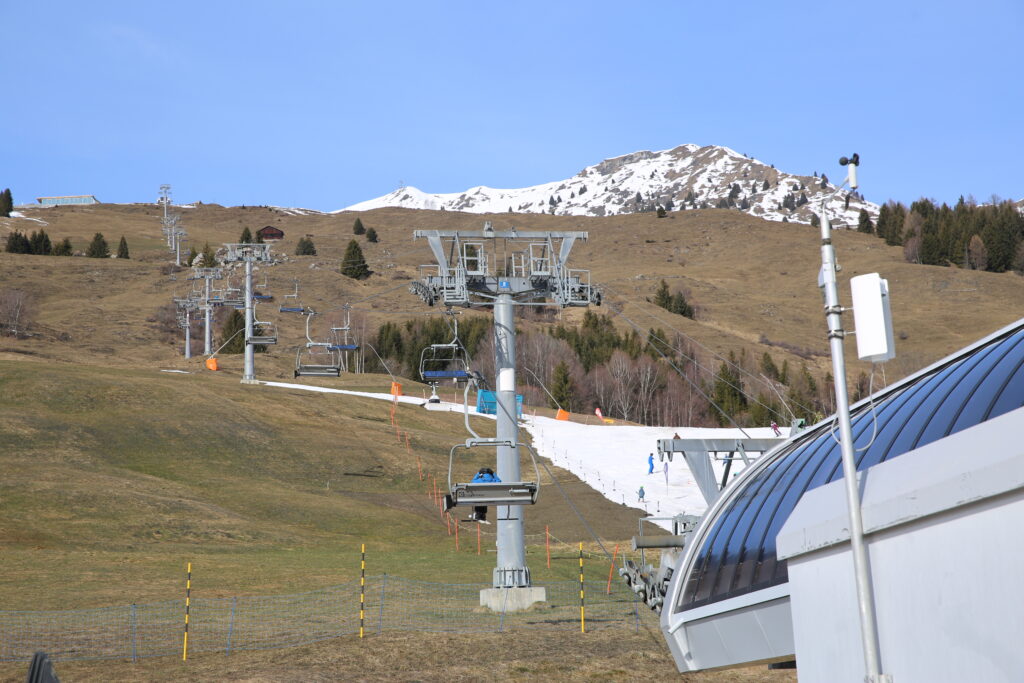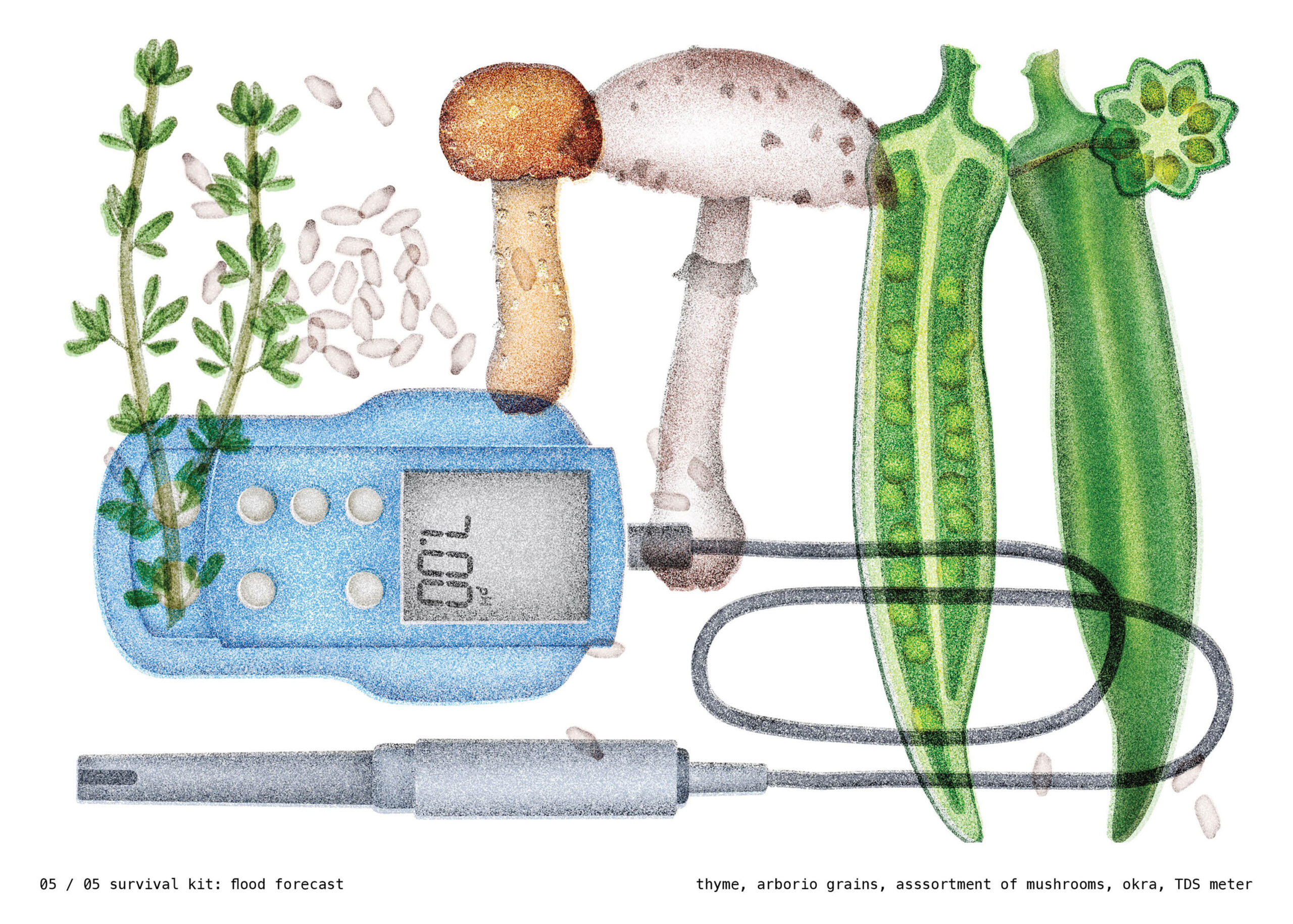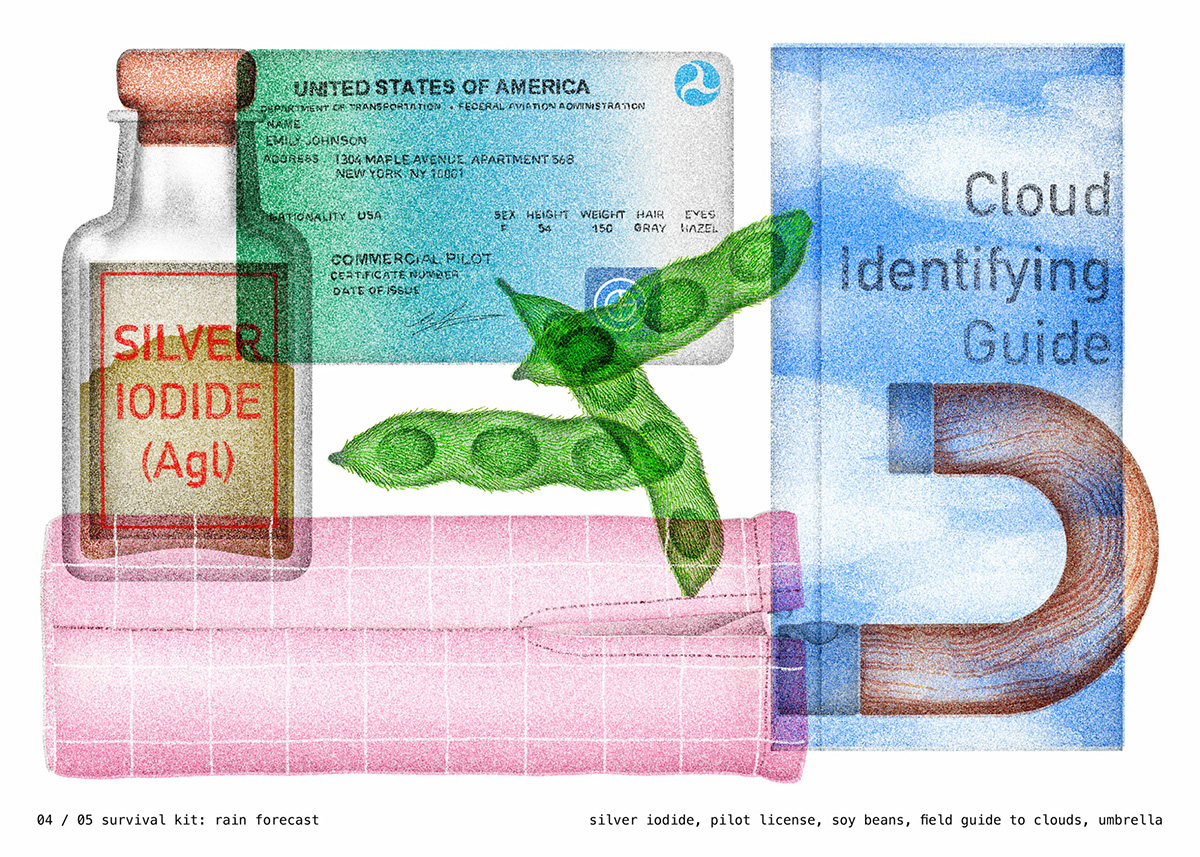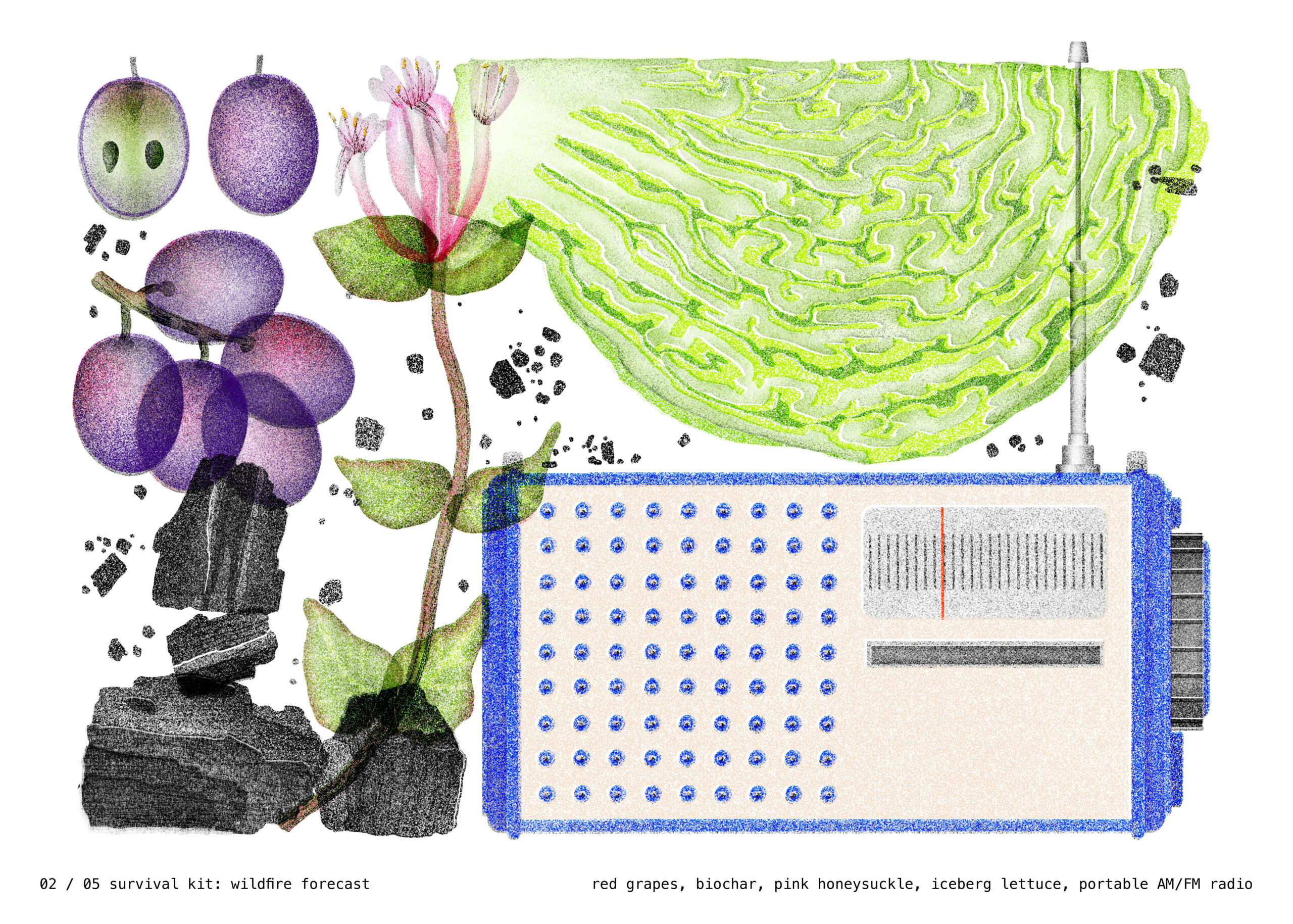Food Forecast is a series exploring the edible plants that will be available in increasingly extreme environments and an exploration of creative strategies to incorporate these plants into our everyday lives. These foods are a glimpse into the way our shifting climate will impact our future diets.
When I got my first glimpse of the Alps from my train window they were brown. It was the middle of winter, and the mountains should have been tucked under a thick blanket of snow, fluffy and crisp. Instead, ribbons of artificial snow cut across the mountains creating sad narrow ski paths, filled with people in denial of the gradual disappearance of snow and the industries connected to it. From the historically snowy slopes of Japan’s Mount Fuji to the Sierra Nevadas in California, global snowlines are creeping higher. Permafrost is melting, and without it, these lush agrarian valleys and the food they grow will inevitably be altered. Whether it is attempting to grow warm weather crops, or trying to recreate the conditions of the Pleistocene era, chefs, farmers, and scientists are all contending with how and if to stop the melt.
I went to the alpine region to meet with Kiah Rutz, an anthropologist who studies the social impact of snow disappearing on local industries in the valley of Surselva. I stayed with her at a cottage neighboring the small-scale cattle farm where she was doing her field research. Together we were working on a project exploring how snowmelt impacts local crops and food production. “People believe in the power of things grown on mountains,” Kiah told me before gifting me a Swiss mountain herb tea. Its purple and gold flowers did imbue it with some sort of allure.
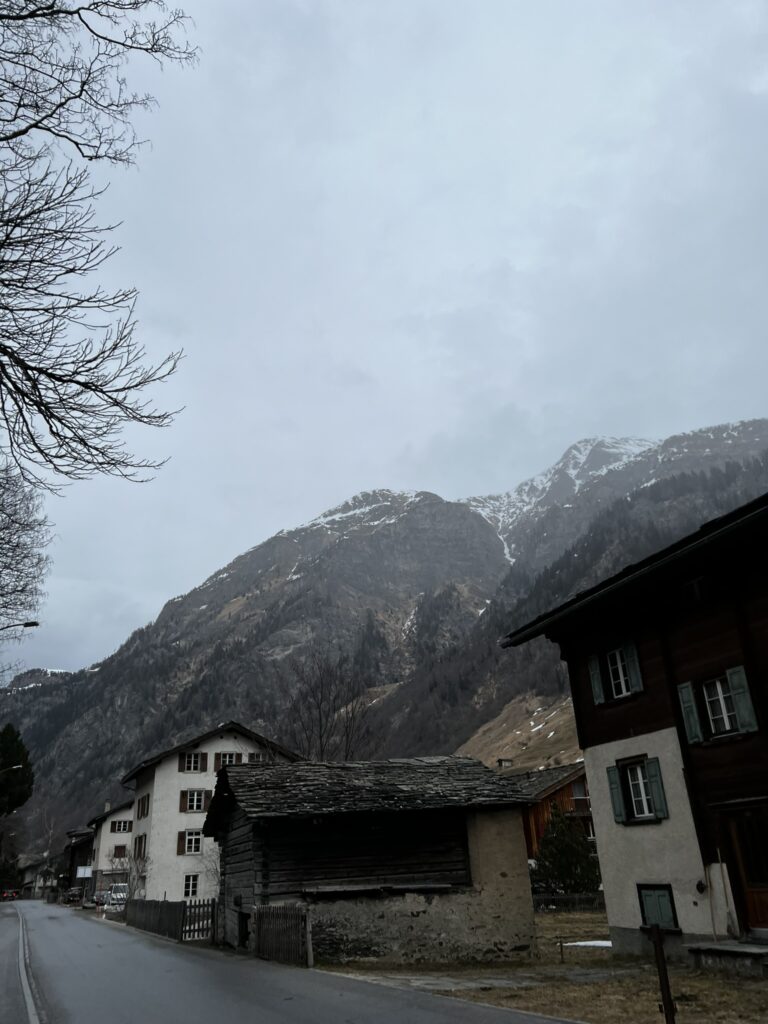
In the evening, as we fed the cows their dinner, we watched them rummage through the hay to find the coveted wildflowers grown on the mountain. They do not save the best for last. The intense smell of cow sauerkraut, better known as fermented hay, wafted as the cows inhaled their food. The grass and hay consumed by the cows are adapted to the climate and water thirsty. A pretty gray cow, with a tongue as large as my forearm, licked me. I attributed her calm gentleness to the fact that she somehow could tell I was an herbivore who liked meadow flowers too. A Grauvieh, which is a special small and agile breed of cow, her build was suited to the steep terrain. Like her anatomy suggests, agriculture is not stationary here, it seeks the sun and retreats from the snow, moving vertically. Animals used for meat and dairy are brought up the mountain in the summer and gradually graze to lower altitudes as the seasons get colder. This cycle, however, is now shifting as the predictability of low temperatures becomes less reliable.
Nutrient-rich hay from the mountains fuels the cows, whose dairy is key to the unique Swiss cheeses (most famously raclette and fondue) and chocolate (although the beans for Swiss chocolates are from mostly West African farms). Without snow and without water, there is no hay. No hay, no dairy. Snow is critical to ecosystem health for three main reasons: water, sun reflection, and insulation. As a source of slow-release water storage, snow ensures even in months without snowfall, there is a steady source of water trickling downhill hydrating the mountain and the cows, who can drink up to 70 liters of water a day. Secondly as a reflector; Snow has an especially high albedo and reflects sun back out of the atmosphere keeping air temperatures low. Lastly, its unique structure with its high air-to-water ratio acts as an insulator, simultaneously protecting permafrost from direct sun and keeping plants protected from harsh temperatures.
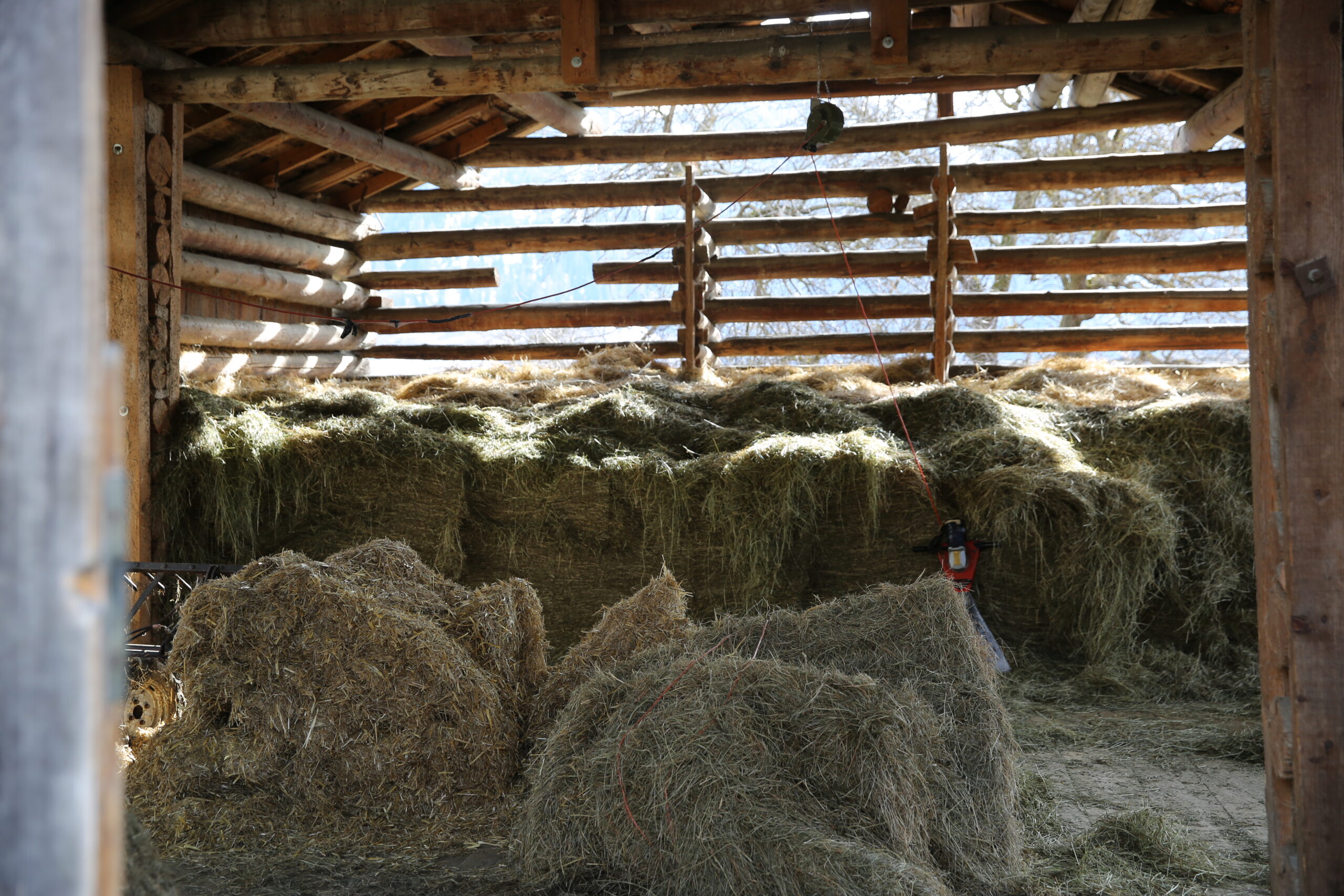
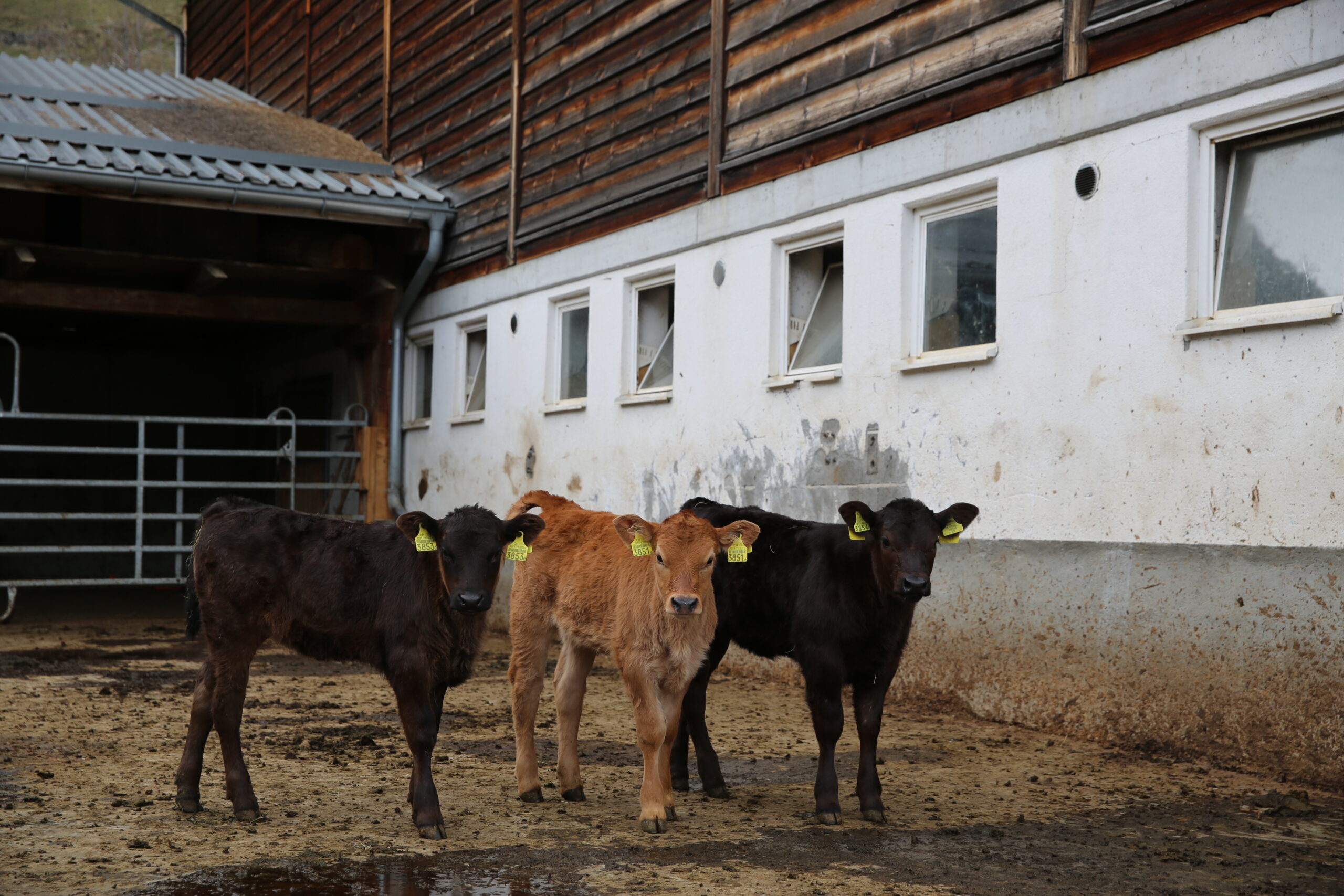
Kiah and I watched ski-lifts, a technology initially patented to be used in the conveyor belts of slaughterhouses, cycling up a snowless mountain. She described what we saw using the Swiss German word “krampfhaft”, which roughly translates to“holding on desperately to the point of getting a cramp”, alluding to the extent of effort the tourist industry was willing to exert to maintain the illusion of winter. While the commercial slopes will invest time, energy and money into creating artificial snow or even farming it — a method of gathering snow and stockpiling it through stacking wood chips, logs and mud — most farmers can’t or won’t. Instead, they hope for snow. When asked about how he would adapt his farming to the scarce snowfalls, Sep Candinas, a small-scale farmer with retired rockstar energy told us “I don’t see any solution in conserving snow. The energy input is too high. This is Sisyphus’ work.” But instead of a boulder, it is a giant snowball. In defiance of our concern, he added,“When it comes to the climate, I’ve had 40 years of it being too hot, too dry, too wet, always. Always this fear that it won’t work anymore.”
“We personally can’t do anything to preserve the snow” Ramona Caduff, an organic chef and farmer who runs a seasonal restaurant in Val Lumnezia, a nearby town, agreed “That’s what they do in tourism… [In farming] you just have to let it happen and wait and hope for snow.” Ramona is part of a cooperative of farmers who exchange grains that they are able to grow at different altitudes. Where she farms, at 3,680 ft (1,122 meters) above sea level, she can only produce spelt, while farmers at lower altitudes can farm corn and wheat. As temperatures warm she admitted that eventually she would probably be able to grow a wider range of grains and was already experimenting with warmer weather crops such as kiwi. “Now we have an almond tree too. By the time the tree is big, we might have the right weather for it. It’s a bit of trial and error” she said. The “wait and see” mentality is a sort of neutrality not uncommon in this part of the world. It is true that there is a huge level of unpredictability to all weather changes and even in the warmest February on record, the day after I left Switzerland, Kiah sent me gorgeous pictures of freshly fallen snow. Still not not anywhere as much as usual, but enough for the farmers wait and see attitude to be vindicated.
Much further north there is an ambitious multi-generational project taking place. Bison, yakutian horses, camels, reindeer, moose, goats, sheep, musk ox, and kalmykian cold-adapted cows are among the animals living in Siberia’s Pleistocene Park, a determined attempt to recreate the grassland conditions and ecosystems of 10,000 years ago. These conditions have the potential to maintain permafrost and to keep global temperatures low. “Unlike the dinosaurs, these animals are still here, or their relatives are. The way ecosystems operated then would be very beneficial to us now.” Nikita Zimov, who runs the project and research station with his father tells me, pre-empting any associations with the fictional and ultimately disastrous Jurassic Park.
Pleistocene Park hopes to mitigate climate change by preventing the melt of permafrost. If permafrost is to melt, one of the world’s largest storages of CO2 will be released into the atmosphere. Large grazing animals compact the snow which keeps the permafrost insulated, and they accelerate the degradation of organic matter through their digestive systems returning nutrients to the soil in the form of manure. Agriculture is a positive byproduct of this productive ecosystem where grasses and herbivores thrive.
If it weren’t for the untethered tenacity and sheer willpower of Nikita Zimov and his father Sergey, it would be easy to view this attempt as human hubris. As an ecosystemic designer, I see this project as a giant design intervention, one whose outcomes, like the weather, are hard to predict. Nikita reminds me that since the Kyoto Protocol happened over 20 years ago there has not been any reduction in oil production and there isn’t time to wait around for politicians and diplomacy. They are trying to do their part. “Five years ago we got funding. Ten years ago we were considered crazy Russian scientists — that was the most common way we were referred to “two crazy Russian scientists…30 years ago the public would have thrown tomatoes and rotten eggs and 70 years ago we would have been persecuted in Russia for the ideas we are proposing, so we are on a very good trend,” he joked.
The permafrost makes up the land going down 600 Meters below the Pleistocene park and rapid melting due to temperature rise would cause the icy foundadtion to disolve, seriously displacing communities or ecosystems living on it.. “The degradation of permafrost is bad locally and it is bad globally,” Zimov emphasized. It could accelerate global temperatures and the snow melt happening further south.
As I spent time in the little alpine towns with Kiah and talked to Zimov about his attempt to keep the permafrost cold I thought about Inuk activist Sheila Watt-Cloutier. She filed a case largely known as “the right to be cold” which was presented to the Inter-American Commission on Human Rights, the case sought relief from violations imposed by global warming on the Arctic. The move was an attempt not only to protect the Arctic but to place value on all the life that is slipping away with the snow. Just like the right to clean water and air, the idea that we have the right to be cold feels just as important as the right to be productive in the cold.
Below is a recipe for a multi-altitude bread:
1 Cup Cornmeal
1 Cup Spelt flour
1 Cup Wheat flour
1 ½ tsp Salt
½ tsp yeast
1 ½ cup warm water
2 cups of cooked spelt, farro, or rice (I like shortgrain brown rice)
½ cup seeds
Mix the flour and cornmeal salt, yeast, and water.
Cover and let sit overnight 12-14 hours.
Pre-grease a loaf pan with oliveoil.
Mix in the rice and seeds into the batter reserving some seeds to add on top.
The batter will be thick and slightly bubbly.
Place in the greased loaf pan and let sit for an hour.
Set the oven to 350 F
Bake 1 hour and 15 minutes.
Slice when cool and serve with alpine elderberry jam.
